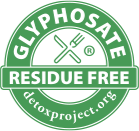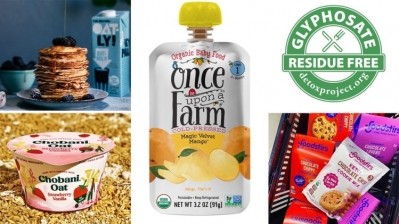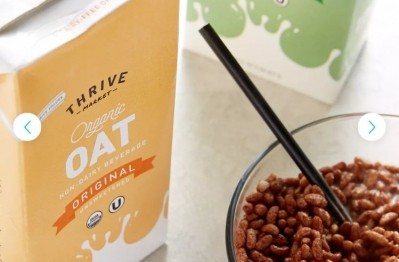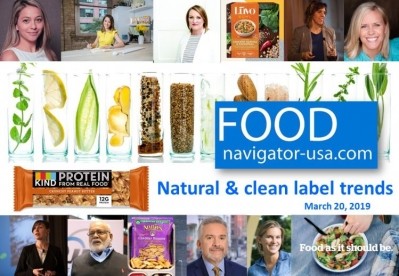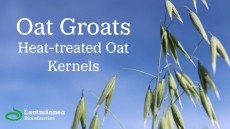Glyphosate Residue Free inquiries surge as 'clean food' movement gathers pace
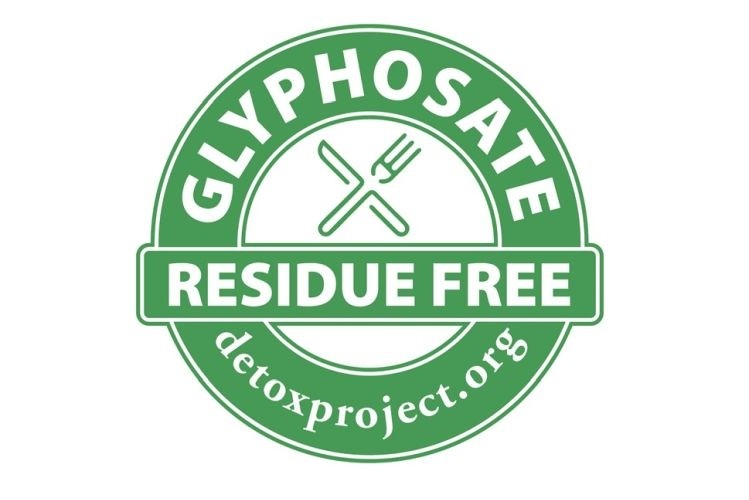
“We launched last May, and we got quite a lot of interest, but from March/April this year there has just been a flood of inquiries [fueled by a well-publicized report from the EWG on glyphosate in oat products, a high-profile ruling requiring Monsanto to pay $289m in damages to a man who alleged its glyphosate-based herbicide caused his cancer (which it is appealing) and a flurry of lawsuits vs big food brands over glyphosate residues].
“We’ve had some of the biggest brands in the US and the world contacting us, not just for certification, but more often for an understanding of supply chain pesticide testing," said Rowlands.
The reality is that most glyphosate is getting into food products because of dessication
While glyphosate is best-known as a herbicide (weed killer) used on crops genetically engineered to be resistant to it (eg. soy, corn, canola), said Rowlands, its presence in breakfast cereals and other products made from oats, wheat, and other conventional (Non GM) crops is due to a steady rise in its application as a pre-harvest dessicant (drying agent), especially in the northern regions of the Great Plains and the grain belt of Midwestern and western Canada, where cold, wet weather comes early.
And this is an important fact when addressing how to reduce or eliminate exposure, says Rowlands, because a lot of people don’t realize that it’s not simply a question of going Non-GMO, for example, as Non-GMO/conventional crops are using glyphosate as a dessicant too.
“The reality is that most glyphosate is getting into food products because of dessication, so choosing Non GMO Project verified products won’t ensure you’re avoiding glyphosate residues. If glyphosate were limited to being used as a herbicide [ie. just used on herbicide tolerant GM crops] then I would hazard a guess that maybe 90-95% fewer products would have residues.
“If it’s used as a weed killer early on in the growing season, it might get into the final product because of being stored in the soil, but the far bigger issue is around dessication, where it’s sprayed directly on the crop one or two weeks before harvest, where it’s obviously going to get into the food supply. Farmers like it because for some crops it means you don’t have to dry the grain again [eg. in drying bins], so it saves money.”
To date 17 brands and around 200 products have gone through The Detox Project’s Glyphosate Residue Free certification process with a further 50+ brands going through the certification process today, and thousands of inquiries coming in, says founder Henry Rowlands, who has a team of five people.
Under the scheme, products are tested by third-party ISO certified laboratories using low detection liquid chromatography tandem-mass spectrometry (LC-MS/MS) methods at least three times a year.
Food manufacturers need to send a message along the supply chain
If food manufacturers want to source oats or other Non-GM crops without glyphosate residues, he said, they need to send a message along the supply chain that they don’t want farmers to use it as a drying agent (there are other ways to dry crops).
“It’s actually something you can do something about. In some cases you could source the ingredient from a less moist growing region where they’re not using glyphosate as a dessicant, or you can build it into your contracts to get the middle men to say to the farmers, you can’t use this as a dessicant.
“We’re working with some very big brands in the US, where it’s not been standard practice to test for pesticide residues or ask suppliers to meet specific standards on this, but things are changing. We’ve seen in Australia for example, one of the biggest wheat belt farming groups is saying we don’t want to use glyphosate as a dessicant anymore.”
Why is glyphosate found in some organic foods?
But what about organic foods? While glyphosate is not permitted on organic crops as a weed killer or drying agent, it has crept into some organic products (a third of organic oat-based products recently tested by the Environmental Working Group had trace levels of glyphosate) likely through a combination of factors, claims Rowlands, who notes that under USDA organic certification standards, firms are not required to test finished products for pesticide residues.
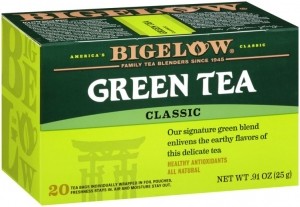
“Organic brands will tell you that it’s spray drift, but it’s most likely through conventional or GM crops getting mixed up in the [organic] supply chain at some stage of the process.”
If we banned glyphosate tomorrow, what would happen?
But if glyphosate were to be phased out as a dessicant, what about its use as a weed killer for GM crops? If we banned it tomorrow, would that be a good thing, or would it just be replaced by harsher pesticides?
“In the Middle East, they banned glyphosate in six countries and it was just replaced by glufosinate, another toxic chemical, and the same in Sri Lanka," said Rowlands.
"I also know that we won’t get the majority of farmers to go organic overnight, or even in the longer term, so we have to invest in new non-chemical weeding alternatives from robotic weeding systems to electronic weeding.”
Should consumers really worry about glyphosate? And if the dose is the poison, is the Detox Project scaremongering?
But are trace levels of glyphosate something consumers should actually be concerned about, or are certification schemes such as The Detox Project and BioChecked just cynical attempts to make a buck by exploiting consumer fears over microscopic amounts of a substance both the European Food Safety Authority (EFSA) and the US Environmental Protection Agency (EPA) insist is safe when used as advised (see box below)?
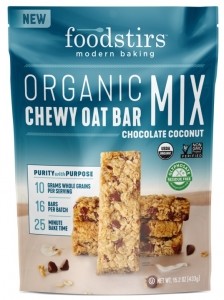
For brands targeted in the recent wave of litigation over trace levels of glyphosate in packaged foods, it certainly feels like the latter, Bigelow president and CEO Cindi Bigelow told FoodNavigator-USA last year, after being at the receiving end of an “irresponsible” and “scaremongering” lawsuit she said provided no context, and failed to explain that the levels at issue were microscopic.
Bigelow routinely tests its dried and brewed teas for pesticide residues, and had found “nothing – zero glyphosate - in the cup [brewed Bigelow tea] ever,” while the dry tea samples tested “between zero and 0.1ppm,” she explained.
"The microscopic traces they claim they found in a single sample are not even a conversation point, but the consumer doesn’t understand that. They just see headlines saying Bigelow has RoundUp weedkiller in its tea.”
Foodstirs: Clean eating is not just about avoiding named ingredients on the ingredients list
That said, food brands looking to meet consumer demand for ‘clean’ food would be well advised to at least try to reduce or eliminate pesticide residues and environmental and process contaminants from their wares if they can, even if the jury is still out on their long-term health impacts, argued Greg Fleishman, co-founder at organic baking mix brand Foodstirs (which has just had three oat bar mixes certified glyphosate residue free).
While the so-called ‘clean’ eating movement initially focused on avoiding ingredients such as artificial colors and flavors, it has gradually expanded to address food production methods, incidental additives, pesticide residues, antibiotics, environmental contaminants such as heavy metals, and processing contaminants such as acrylamide, he said.
“I agree that consumers are confused about some of these things, and some food packages are starting to look like NASCAR with all these different certifications and logos, but initiatives like the Clean Label Project are raising awareness, and in my view interest in glyphosate-free certification will only grow over time.
"Maybe it will even be the issue that prompts a significant shift towards organic farming?”
The EPA has established tolerances for glyphosate on a wide range of crops, including corn, soybean, oil seeds, grains, and some fruits and vegetables, ranging from 0.1 to 310 ppm.
The FDA has yet to release results from its recently expanded glyphosate testing program, but says that “preliminary results for glyphosate testing [conducted in 2016/17] showed no pesticide residue violations for glyphosate in all four commodities tested (soybeans, corn, milk, and eggs).
“The FDA plans to include results for glyphosate testing in future reports, such as our annual report of the Pesticide Residue Monitoring Program.”
Glyphosate and safety
A 2015 statement from the International Agency for Research on Cancer (IARC) (part of the World Health Organization) that glyphosate was ‘probably carcinogenic to humans’ has given ammo to plaintiff’s attorneys going after Monsanto (which makes glyphosate/RoundUp), as well as food companies utilizing ingredients from crops sprayed with the herbicide.
However, Monsanto said it was baffled by the IARC’s statement as “there is no new research or data that was used; the most relevant, scientific data was excluded from review; the conclusion is not supported by scientific data; and there is no link between glyphosate and an increase in cancer when the full data set is included in a rigorous review”.
It also noted that the IARC's findings were inconsistent with those of two other WHO programs – the Core Assessment Group and the International Program on Chemical Safety – which have both concluded glyphosate is not carcinogenic.
A November 2015 report from the European Food Safety Authority (EFSA) also found that "glyphosate is unlikely to pose a carcinogenic hazard to humans and the evidence does not support classification with regard to its carcinogenic potential." Meanwhile, a May 2016 report by the Food and Agriculture Organization of the United Nations' (FAO's) Panel of Experts on Pesticide Residues in Food and the Environment, and the World Health Organization (WHO) Core Assessment Group on Pesticide Residues found that "glyphosate is unlikely to be genotoxic at anticipated dietary exposures."
EFSA further concluded in 2017 that, "The current assessment concluded that the weight of evidence indicates that glyphosate does not have endocrine disrupting properties through oestrogen, androgen, thyroid or steroidogenesis mode of action based on a comprehensive database available in the toxicology area. The available ecotox studies did not contradict this conclusion."
In its December 2017 draft risk assessment the EPA concluded that glyphosate “is not likely to be carcinogenic to humans.”
However, a jury in a landmark case brought by Dewayne Johnson, a 46-year-old former groundskeeper, recently determined that Monsanto’s Roundup weedkiller caused his cancer and that the corporation failed to warn him of the health hazards from exposure.
To date, most lawsuits over glyphosate residues in packaged foods have not attempted to argue that foods containing trace levels of glyphosate are inherently unsafe, but have instead argued (with mixed results) that consumers would not expect to find the herbicide in products marketed as ‘all natural.’
However, in a new putative class action lawsuit filed vs General Mills in Florida six days after the verdict in the Dewayne Johnson vs Monsanto trial, plaintiff Mounira Doss argued that General Mills had a duty to disclose the presence of glyphosate in Cheerios cereal products, but failed to do so.
This was swiftly followed by a similar suit vs Bob’s Red Mill Natural Foods in California.
